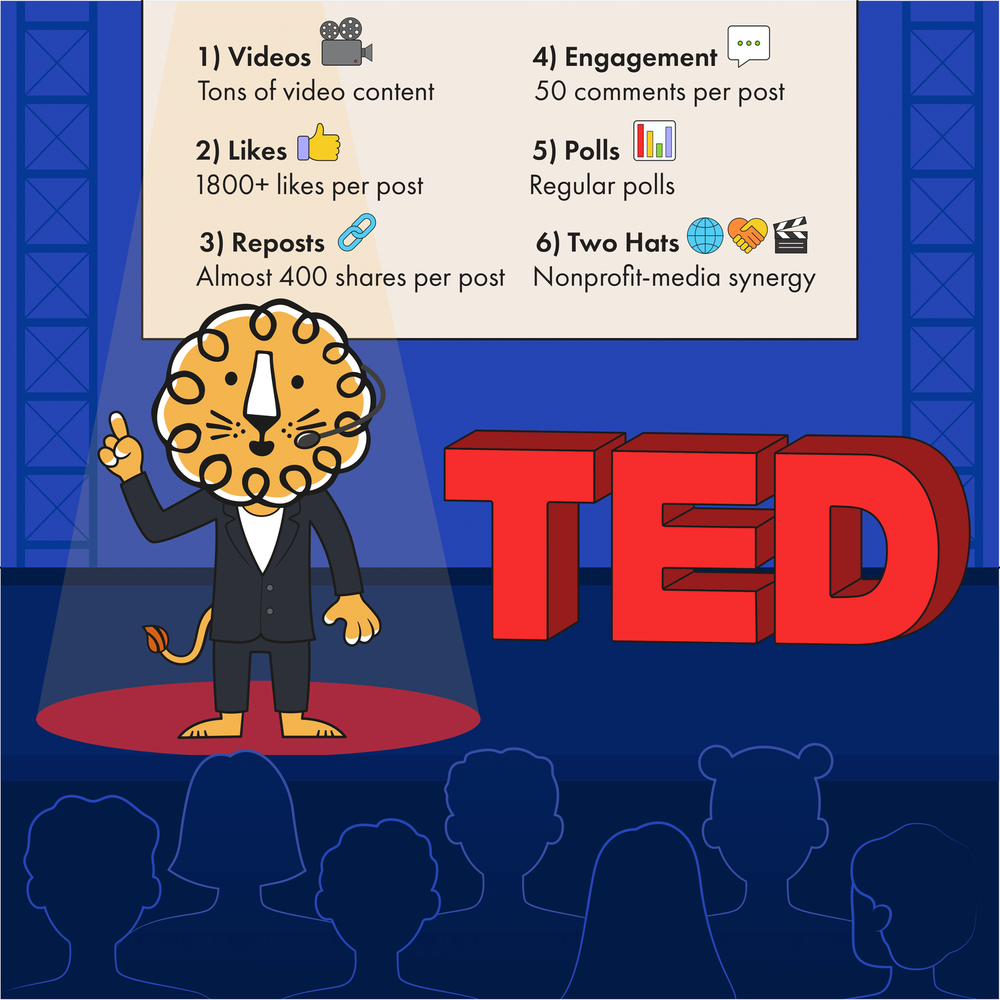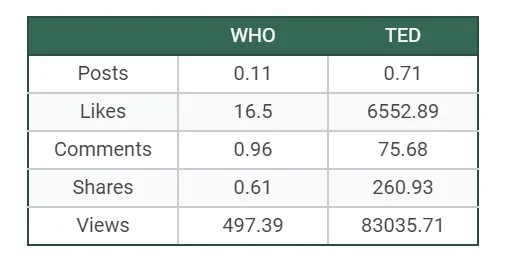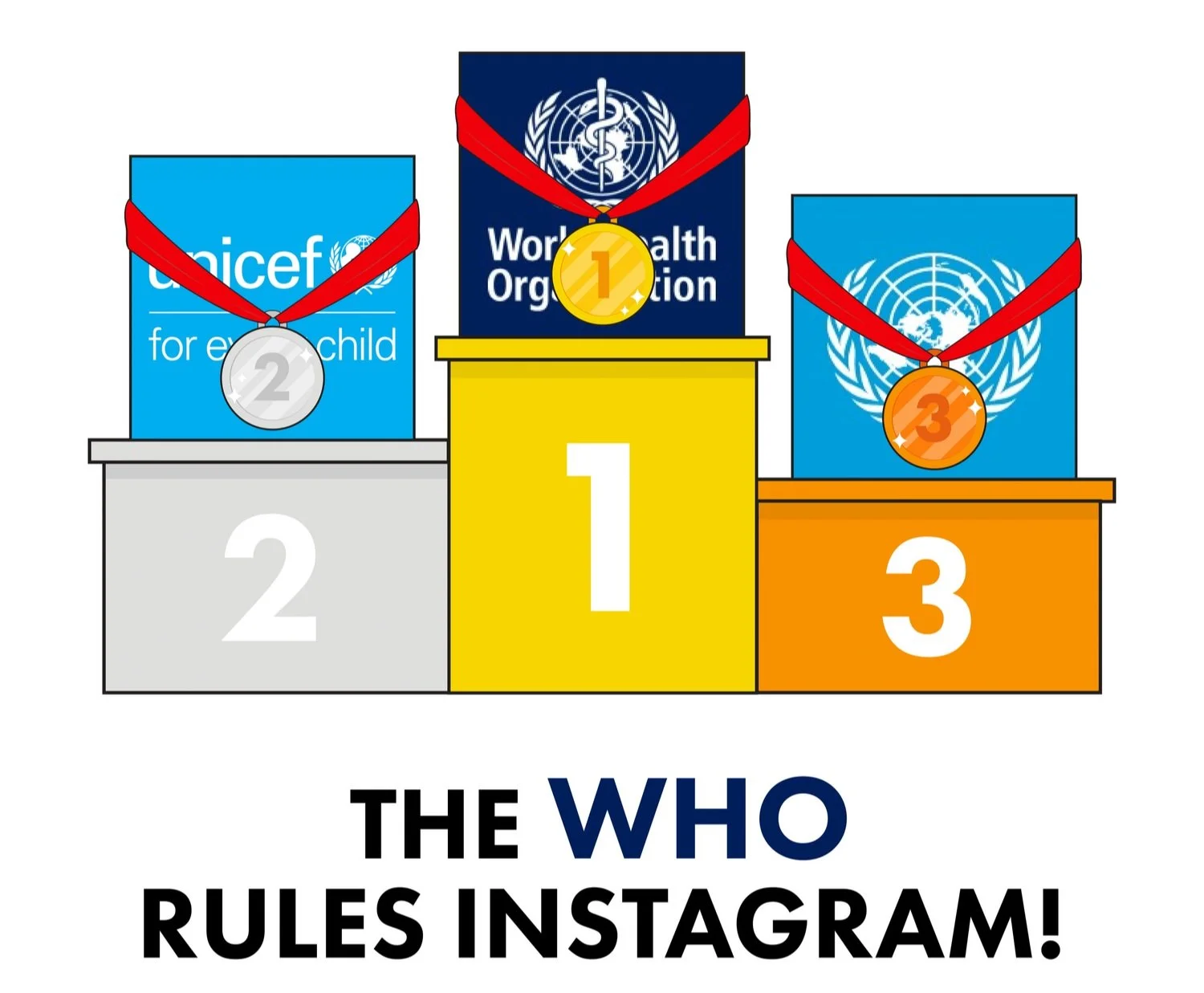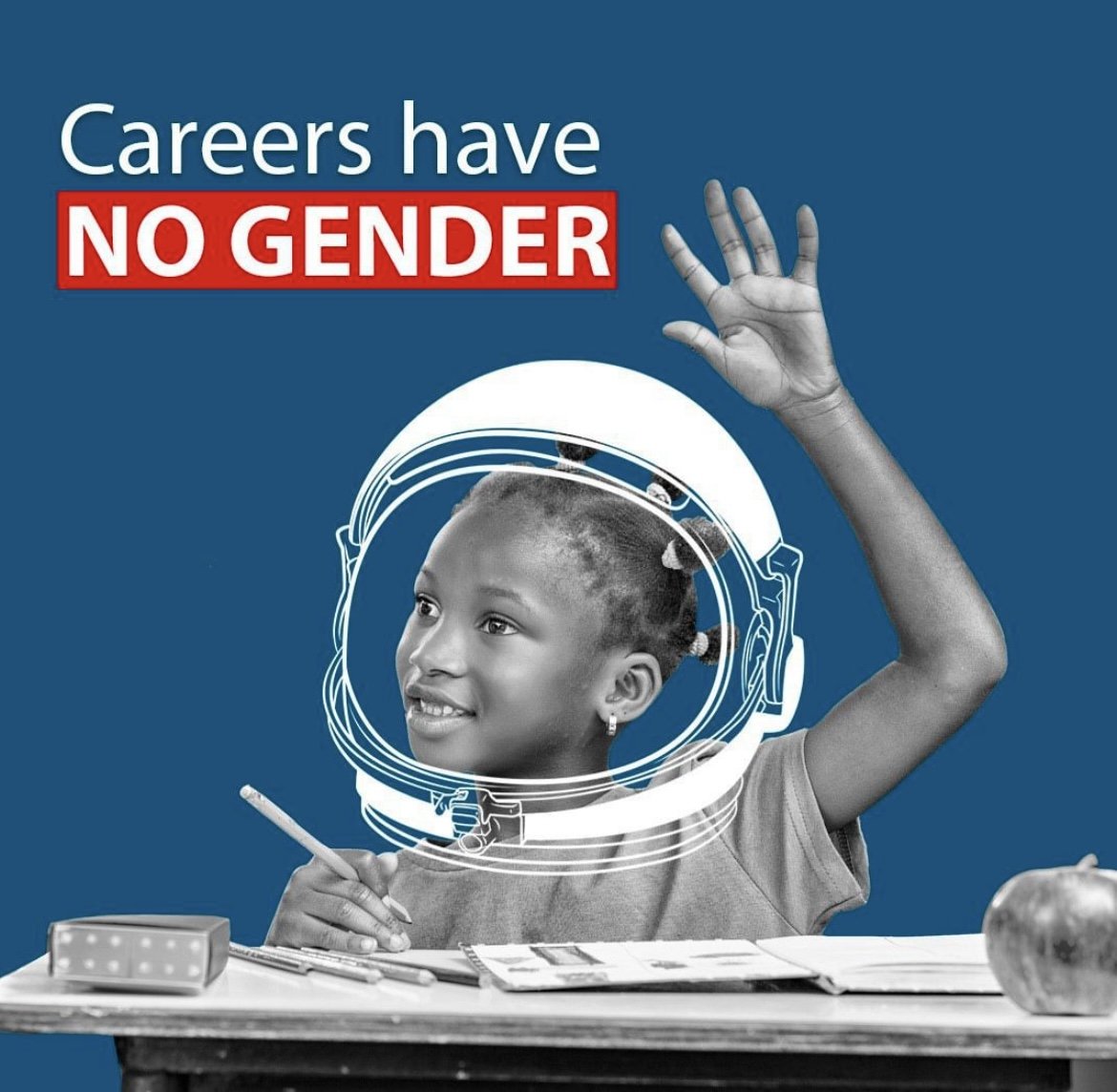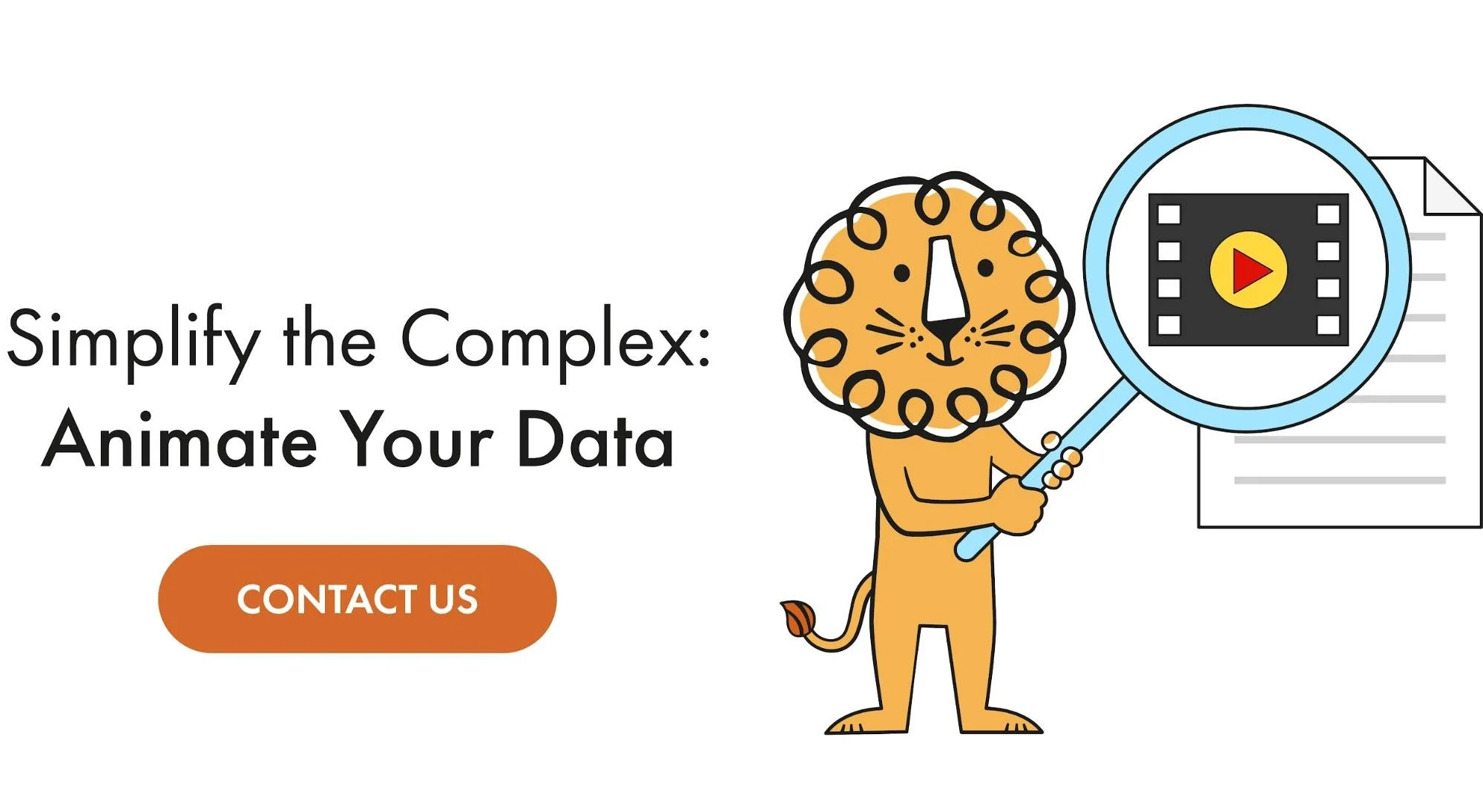The Top 10 Nonprofits on Social Media
In this blog, we give you a comprehensive look into the top 10 nonprofits dominating the big 6 social media platforms (Facebook, X, Instagram, TikTok, LinkedIn, and YouTube).
We gathered data within a 28-30 day range from each account and platform from September 2023 to April 2024 to get the best results.
Top 10 Nonprofits Based On Cross-Platform Averages
Let’s meet the frontrunners of the social media relay. Our champion is TED, which is famous for its international online talks and conferences. It boasts the largest cross-platform follower count of 14 million, the highest average shares per post, and an average number of daily views.
This an impressive feat for TED considering its annual revenue of $2.9 billion, a far stretch from its peers with the WHO and the U.N amassing $6.7 billion and $7.4 billion yearly.
Here’s how the rest of the top 10 did:
World Health Organization (WHO) - 11.93 million followers
UNICEF - 9.4 million followers
United Nations (UN) - 6.7 million followers
National Public Radio (NPR) - 5.9 million followers
World Economic Forum (WEF) - 4.3 million followers
American Red Cross - 2.9 million followers
The Met - 2.3 million followers
St. Jude - 698,500 followers
Amnesty International - 456,200 followers.
But do keep in mind that these rankings will vary according to which platform we’re talking about. So, let’s get on it.
The Top Nonprofits On Facebook
With over 3.05 billion active monthly users, it’s no wonder why Facebook is the platform that has the majority of nonprofits using their pages, a whopping 96% to be exact.
It also helps that Facebook is one of the world’s most trafficked sites after Google and YouTube. For organisations looking to expand their reach to wider audiences, using Facebook could be one of your best bets.
Here’s what we found about the top 10 nonprofits on Facebook from February 9 to March 7, 2024:
The World Health Organization (WHO) and TED talks make it into the top three again, a trend we will see a few more times on this blog, with 38 million and 17 million followers sequentially. The UNICEF bridges the gap at 2nd place with 30 million followers on its Facebook page.
The rest of the nonprofit stats on Facebook are the following:
The World Economic Forum (WEF) - 8.9 million followers
National Public Radio (NPR) - 7.6 million followers
United Nations (UN) - 7.5 million followers
PETA - 5.7 million followers
United Nations High Commissioner for Refugees (UNCHR) - 4.5 million followers
Team USA trails closely - 4.2 million followers
Public Broadcasting Service (PBS) - 3.9 million followers
We also discovered that in comparison to the other platforms, Facebook has a high average of posts per day (8.24), second only to X/Twitter (15.97) with links and photo posts making up most of their content.
NPR is a consistent link-poster, which helps them drive traffic back to their main website. They focus on blogs and articles about news and pop culture like this one about Girl Scout Cookies:
Additionally, UNICEF posts a lot of real-life pictures and graphic illustrations too. This is one of the images they published for awareness of global mental health.
The Top Nonprofits On TikTok
We’ve all seen how TikTok has skyrocketed into one of the most popular apps out there and nonprofits wasted no time in utilising this platform for their cause.
Let’s see how each organisation fared on the platform based on what we’ve gathered from a 28-day range (March 23 to April 19, 2024)
The World Health Organization (WHO) takes the top spot on TikTok with 2.8 million followers.
Here’s a look at how the other nonprofits did:
TED Talks - 2.4 million followers
World Economic Forum (WEF) - 1.7 million followers
The American Red Cross - 853,700 followers
St. Jude - 698,000 followers
National Public Radio (NPR) - 462,200 followers
UNICEF - 453,200 followers
The Metropolitan Museum of Art (The Met) - 327,000 followers
United Nations (UN) - 195,700 followers
Amnesty International - 117,800 followers.
We know that TikTok is all the rage amongst youngsters, but let’s put that into numbers. According to DemandSage, 69% of its users are between the ages of 18-34. Meaning, that nonprofits should focus their efforts on catering to a younger audience when using TikTok.
Here’s one of WHO’s more recent videos that garnered a ton of views compared to the rest of their previous posts (31k):
The video is in lieu of World Hand Hygiene Day and discusses the importance of hand hygiene with a medical professional.
While the World Health Organization has the most followers, it falls behind TED Talks when it comes to stats. Currently, TED has the highest average likes, shares, and views among the top 10 and WHO’s stats are almost negligible compared to TED’s.
We can attribute this to the organisation’s content being more relevant and tailored to TikTok users. Not only that but with TikTok being a video-based platform, TED has an edge with videos being its specialty.
Here’s one of their popular TikTok videos about space with 1.8 million views and over 100,000 likes to prove that:
The Top Nonprofits On Instagram
Since its inception, Instagram has come a long way from being a photography app. Now, it has blossomed into a platform where you can share posts, notes, and reels.
The Museum of Modern Art uses a lot of reels to highlight their artworks and installations. This reel with over 9 thousand shares of a piece by Mike Kelly made from pre-loved stuffed animals also sparked some discourse in the comments.
Some loved the sentiment:
While others found it wasteful:
Among the six platforms, Instagram also has the highest comment average with over 2 billion active users commenting single words or emojis to full paragraphs. Nowadays, more people are using the app and its algorithm constantly curates content that each user will find interesting. Everyone’s Explore page is tailored to show posts that are similar to ones they’ve seen and interacted with, so you’ll likely find a post worth commenting on more frequently.
The World Health Organization comes in first again with 12.1 million followers, UNICEF is second with 11.5 million, and the UN is third with 8 million followers.
Fourth to tenth place according to follower count go to:
TED - 7.2 million
National Public Radio (NPR) - 6.7 million.
The Museum of Modern Art (MoMA) - 5.8 million
World Economic Forum (WEF) - 5 million
Metropolitan Museum of Art (The Met) - 4.3 million
Greenpeace - 4 million followers
World Wildlife Fund (WWF) - 3.9 million.
This image from the UN’s IG account celebrates the International Day of Women & Girls in Science:
In the age of influencers, Instagram is at the forefront of making a digital impression and is one of the most used apps by content creators. This also rings true for nonprofit influencers as it is the most used app for their campaigns too.
Of the 73% of nonprofits on Instagram, 94% of them work with influencers to further their campaigns.
The Top Nonprofits On X/ Twitter
X (formerly known as Twitter) is definitely a new name but in no way is it new to the social media game. In fact, after analysing its metrics from October 11-18, 2023, we noticed that it has the highest average of posts per day (15.97) and shares per post (517.62).
Twitter’s high usage rate is all thanks to its simple and easy format. While you can also share posts and images on the app, it doesn’t require immensely curated media content like the others, but concise texts that go on air with just one click.
However, quantity does not equal quality here. So, experts advise that instead of just dishing out countless empty tweets, stick to 3 meaningful posts as a minimum per day and let 30 be the max [Jones].
With the second-highest average follower count of over 8 million, here are Twitter’s top 10 nonprofits:
United Nations (UN) - 16.3 million followers
World Health Organization (WHO) - 12.3 million followers
TED - 11.1 million followers
UNICEF - 9.2 million followers
National Public Radio (NPR) - 8.7 million followers
WikiLeaks - 5.5 million followers
MoMA - 5.2 million followers
Human Rights Watch - 5 million followers
The American Red Cross - 4.9 million followers and
World Economic Forum - 4.4 million followers
Twitter posts from nonprofits will usually have a striking message or contain hard-hitting news and are paired with pictures and a link. This example from Human Rights Watch captures that perfectly.
The Top Nonprofits On LinkedIn
LinkedIn’s top 3 is the same as Twitter’s but in a different order. Here’s how the list goes:
TED - 23 million followers
The World Health Organization - 5.5 million followers
United Nations (UN) - 5.2 million followers
The World Economic Forum (WEF) - 4.8 million followers
UNICEF - 4.6 million followers
United Nations Development Programme (UNDP) - 2.2 million followers
The World Bank - 2 million followers
United Nations High Commissioner for Refugees (UNHCR) - 1.9 million followers
UNESCO - 1.8 million followers
The Mayo Clinic - 1.3 million followers
The World Economic Forum (WEF) recently posted this article link that addresses the financial gender gap and how it can be fixed.
LinkedIn is more of a professional network than a social one, so we need to look at its metrics through a different lens in comparison to the other platforms.
If you’re a marketer targeting executives, organisations, investors, and those who can professionally contribute to your cause, LinkedIn would be a good place to start. It is also ideal for sharing more specialised updates and research.
The Top Nonprofits On YouTube
Lastly, we have YouTube, another familiar platform, that focuses on long-form videos. However, shorter branded videos ranging from 31 to 60 seconds receive the most views on the app.
Because filming, editing, and publishing videos take more effort and time, the two video-based platforms on this list, YouTube and TikTok, have a relatively low number of average daily posts, 0.67 for TikTok and 0.78 for YouTube.
Based on what we compiled from March 28 to April 24, 2024, here are the nonprofits dominating the YouTube board:
TED comes in first, yet again with 24.3 million subscribers on YouTube.
Here’s one of TED’s videos that tackles politics with a sense of humor, ultimately making it a more approachable and resonant topic with viewers.
Here are the rest of the top nonprofits on YouTube:
The Smithsonian Channel - 4.15 million
The United Nations (UN) - 2.9 million
Public Broadcasting Service (PBS) - 1.2 million
Mayo Clinic - 1 million
The World Economic Forum (WEF) - 921,000.
The World Health Organization (WHO) - 890,000
UNICEF - 708,000
Lastly, the Museum of Modern Art (MoMA) - 538,000
SaveTheChildren - 152,000
The Smithsonian, being the world’s largest museum and educational institution, uploads a ton of interesting videos on their channel too, which is what keeps subscribers hooked.
For example, this video from 12 years ago with 90 million views is an informative visualisation of what a fight between a Titanoboa and a T-Rex would look like:
And this more recent one from a year ago, which doesn’t have the same volume of views, but is still one of the most viewed in the past year (85k views) is of a Royal Albatross’s flight duration:
Whether a nonprofit channel or not, people turn to YouTube for informative and educational videos because videos effectively tap into our visual and auditory senses, making learning a more fun and engaging experience. This beats reading lengthy articles and journals most of the time.
So, when your organisation wants to dig deeper into a topic and pique people’s interests, YouTube would be the place to do so.
Conclusion:
Upon analysing the statistics and strategies of the top nonprofits across six social media platforms, here’s what our findings led us to:
TED, WHO, and the UN are consistent frontrunners on the leaderboard due to their established popularity.
You also have to consider your target audience to maximise each platform best. For instance, to reach a younger demographic, you’ll have better chances by posting on TikTok and Instagram.
For posting quick real-time updates often, such as news, X is a more conducive space to do so. It also gets the word out faster and to a wider reach. It also gives you favorable odds when it comes to engagements, alongside Instagram.
To flourish on Instagram, TikTok, and YouTube, thoughtful and visually striking reels and videos are your ticket to success. TED does well on all three platforms because its niche specialises in creating creative and engaging videos.
Finally, since each nonprofit will vary from advocacy to branding, it is essential to leverage your unique strengths and utilise different strategies on each social media platform according to your goals.
What do you think? Did we miss anything? We’d love to hear from you. Let’s discuss!
Contact us via email to talk about it.


